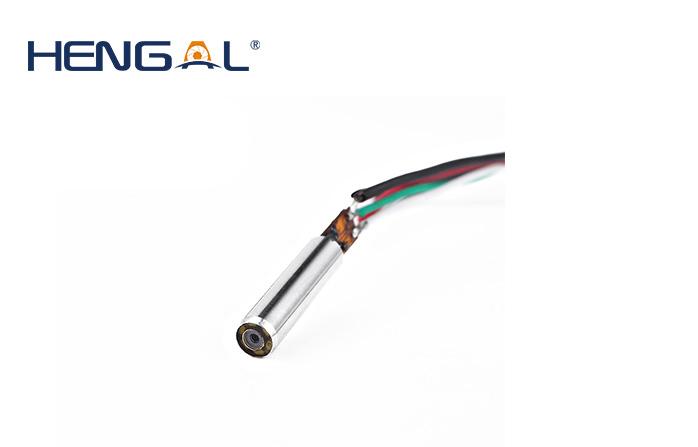The handheld video endoscope often has unique advantages in the quality inspection of various pipes, deep holes and inner surfaces of closed containers, and has gradually become a non-destructive inspection method superior to other inspection methods. There are many types of handheld video endoscopes, but the detection principle of each product is the same. The probe end lens is used to collect the light reflected from the surface of the object, and the surface image of the object to be inspected is obtained as the basis for judging the surface condition. The probe is the core component of endoscopy. How to use the endoscopy probe correctly during the inspection!
1. Correctly set the probe position and angle. Image clarity, resolution, and image magnification are major endoscopy concerns related to the distance and angle of the probe to the viewing area. Under normal circumstances, when the lens is too far away from the object being inspected, the light will be weaker due to the lighting conditions, and the image will be darkened. As the lens approaches the object from far to near, the magnification and clarity of the image will gradually increase, but as the lens approaches a certain distance, the image will become virtual as the distance decreases. Therefore, it is usually best to observe the image within a certain range from the detection area (for example, within the range of 5-25mm). Therefore, the distance between the probe and the object to be inspected should be well controlled. In addition, the plane of the probe and the object to be measured can usually achieve a good observation effect within the range of 45-90 degrees. In the actual inspection, by repeatedly changing the position and angle of the probe and the observation point, a suitable observation position can be found, and the Satisfactory detection results.
2. Properly replace the probe. The viewing angle of the probe refers to the angle of the maximum observation range of the probe, and the size of the viewing angle is determined by the lens group on the probe. They are usually mounted on the front end of the probe with dual connection methods such as double thread, thread and external lock. The handheld video endoscope, especially the video endoscope, can change the angle of the viewing direction by changing different conversion lenses. Therefore, if the probe needs to be replaced during the inspection process, it must be replaced correctly according to the interface mode and installed firmly to prevent the lens from falling off during the subsequent inspection process.
3. The probe should be transported smoothly to the position of the object to be inspected in an appropriate way to avoid damage to the probe. Since the endoscopic inspection of the pipeline accounts for more than half of the total endoscopic inspection workload, the following takes the pipeline inspection as an example for description. The larger the diameter of the probe, the longer the length, and the smaller the gap after entering the pipeline, which is easy to hinder the entry and exit of the pipeline. Correspondingly, the probe is easily blocked and damaged. Therefore, when the probe is moved in during the inspection, the slower the movement, the probe will be damaged. If the probe encounters obvious resistance in the process of advancing smoothly, it should stop advancing immediately, remove the resistance and then advance, and do not pull it hard. Likewise, probes should be slow and cautious when exiting.
The above has explained some problems of using the handheld video endoscope probe from three aspects. In specific applications, auxiliary tools can also be used to help the probe reach the ideal observation position smoothly, maintain the stability of the relative position between the probe and the observation point, and stabilize the image during motion scanning. In addition, after using the probe, be sure to perform the necessary cleaning and maintenance work on the probe according to the equipment instructions. Only when the handheld video endoscope probe is used correctly during the inspection process, and the probe remains unchanged after the inspection, can it be used for a long time and obtain accurate inspection results.
handheld video endoscope https://www.hengal-tech.com/Handheld-video-endoscope-with-3-5-screen-pshow/25.html

